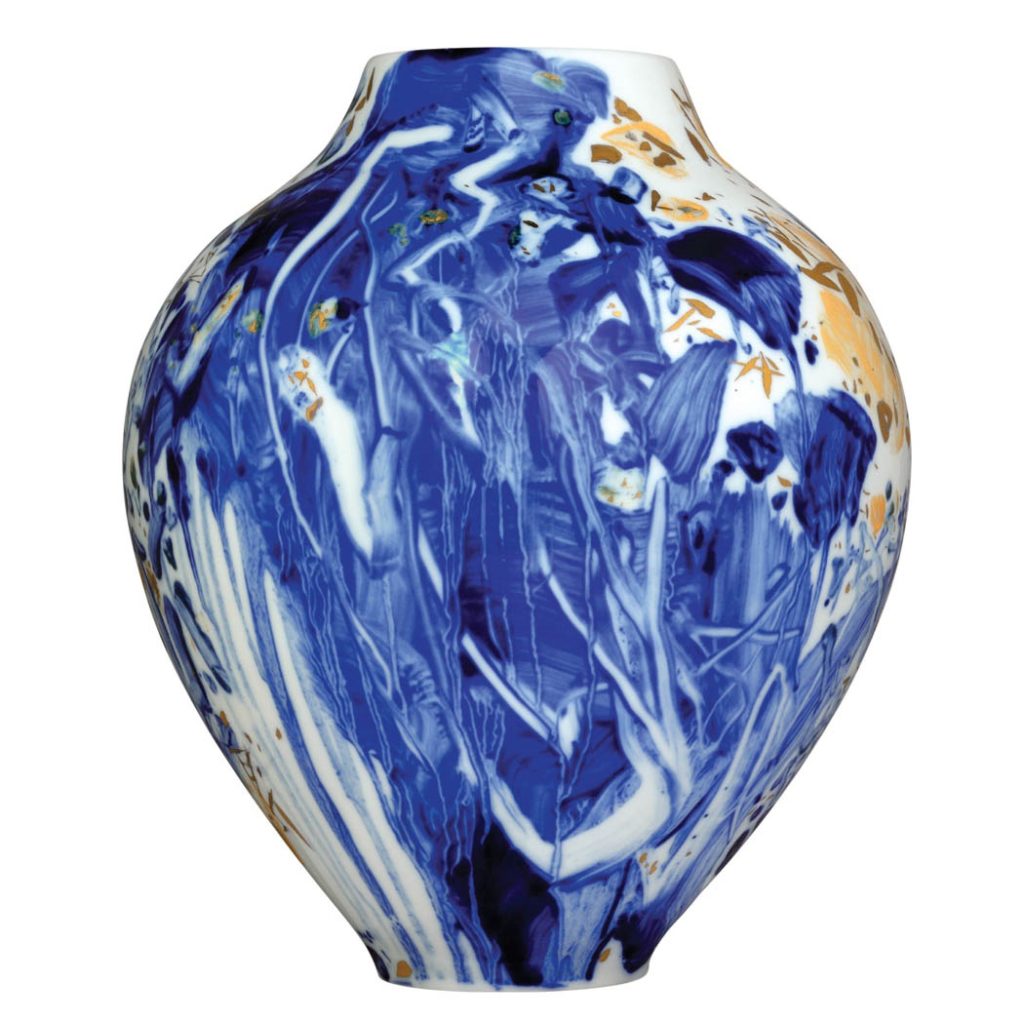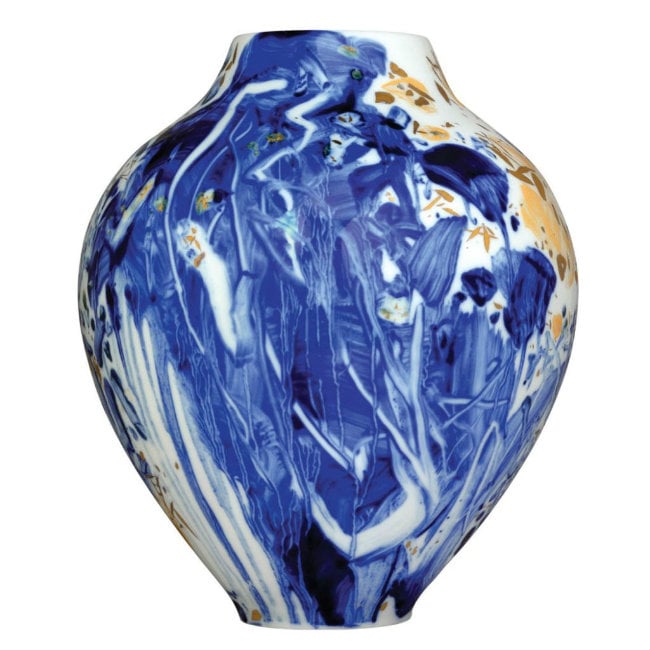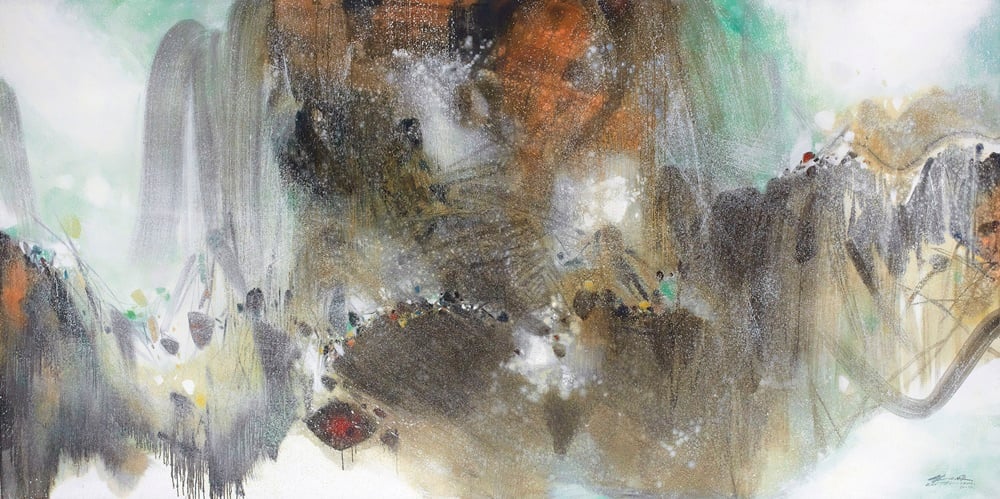Law & Politics
Did Marlborough Gallery Steal One of China’s Greatest Artists? An Appeals Court Must Decide
A long-running dispute between Enrico Navarra and Marlborough centers on whether one gallery interfered with the other's exclusive contract.

A long-running dispute between Enrico Navarra and Marlborough centers on whether one gallery interfered with the other's exclusive contract.

Eileen Kinsella

It’s no secret that art galleries are often extraordinarily protective of their relationships with artists. But a long-running legal dispute between a top international player and a lesser-known French gallery—one that has outlasted even the artist in the middle of the fight—gives new meaning to the concept of cutthroat art-world competition.
A United States Appeals Court is soon expected to finally issue a ruling on an epic legal battle between the Paris-based Enrico Navarra Gallery and the international dealership Marlborough Gallery. Navarra Gallery alleges that Marlborough inappropriately interfered with its contract with the Chinese-French abstract painter Chu Teh-Chun and deeply injured its business in the process.
The dispute, which has lasted for more than a decade and spanned two continents, invites questions that have become only more high-stakes in an increasingly consolidated art market: What do art dealers and artists really owe each other when they decide to work together? And how far is too far for a competing dealer to go to tempt an artist to jump ship? When does regular old competition become unjust interference?

A (2007–8) vase by Chu Teh-Chun at art021-shanghai. Image via Marlborough Gallery
The fight first erupted in Paris in 2007 before spilling over to New York in 2010. Over the years, courts have issued multiple split rulings and outright dismissed other claims. Though no firm date has been set for the appeal, experts familiar with the case say a decision will likely be handed down before the end of the summer.
Navarra, Marlborough, and both galleries’ attorneys declined to comment on the proceedings. But the voluminous flow of court documents gives a broad outline of the dispute.
“The parties appear to agree on few, if any, of the facts material to this dispute,” US District Court Judge Kimba Wood tellingly wrote in an introduction to her opinion last April.
The trouble started back in 2003, when Chu—a skilled ink and oil painter who, along with Wu Guanzhong and Zao Wou-ki, is considered one of a trio of great French-Chinese painters—entered into a production agreement with Navarra and the ceramics factory La Tuilerie in Treigny, France, to produce ceramic plates.
Under the terms of the agreement, La Tuilerie was to reproduce 24 of Chu’s original hand-painted designs in limited editions totaling 1,152 ceramic plates. The plates were to be divided among Chu, La Tuilerie, and Navarra to be exhibited and sold.
Navarra agreed to pay Chu a 14 percent royalty three times a year on the plates it sold for prices starting at €1,300 ($1,516) for a round plate and €1,600 ($1,866) for a square plate. Chu agreed to sign off on each plate before La Tuilerie turned it into an edition in the form of a “bons à tirer” signature, French for “okay to print.” (This approval is referred to as “BAT” in the court filings.)
The financial stakes for this deal were significant. All told, the plates would be worth more than $1.7 million combined, if all sold for at least the minimum price. The amount of damages Navarra is seeking exceeds $15 million.
And according to the artnet Price database, Chu’s ceramics—though not necessarily examples from the La Tuilerie line—have fetched as much as $50,000 at auction. His paintings sell for far more. His current auction record of $11.8 million was realized in 2016 for the diptych Vertige Neigeux (Snowy Vertigo), 1990–99, at Christie’s Hong Kong.

Chu Teh-Chun, Vertige-Neigeux (1990-99) sold for a record $11.8 million at Christie’s Hong Kong in November 2011.
Image: Courtesy Christie’s.
Before too long, problems began. Four years after Chu teamed up with Navarra, he signed a separate agreement with Marlborough and the French porcelain factory Sèvres to produce 57 hand-painted ceramic vases. Navarra first learned of their existence from a magazine article announcing the collaboration.
That’s when the relationship between the French dealer and artist started to sour. In early 2007, Chu sent a cease and desist letter to Navarra demanding that the gallery stop producing his ceramic plates, cancel all current and future exhibitions, and return any unsold plates. The artist alleged that the gallery had failed to pay Chu his royalties, failed to seek the required “bons à tirer” to produce the plates, and failed to issue the agreed-upon minimum of 240 plates per year. Unable to resolve the dispute, Chu filed a lawsuit against Navarra in April 2007.
For its part, Navarra claims it performed its duties adequately. But it doesn’t blame Chu alone. Instead, the gallery is convinced that he was being manipulated by Marlborough, which wanted to slice away the competition. The French dealer claims that it was Marlborough that induced Chu to send an email to Christie’s Hong Kong questioning the authenticity of 12 plates in 2008, which led to their withdrawal from auction.
Further, Navarra argues, it was Marlborough that pushed Chu to publish an ad disavowing the La Tuilerie plates in the widely-read trade publication Le Journal des Arts. (“Warning from M. Chu Teh-Chun,” the ad read, alerting readers to the French lawsuit and the withdrawal of the plates from Christie’s.)
The effect was “disastrous” and the plates were rendered “unsalable,” according to Navarra. As a result of this alleged interference, the gallery claimed it suffered “financial, reputational, and emotional damage.”
The court documents lay out numerous scenes of competitive intrigue. Navarra accuses Marlborough of seeking to “put an end” to Chu’s relationships with other galleries, including discouraging a German dealer from mounting a planned show of his work. “The Baden-Baden dealer Franck Pagès is out of the race,” one of the gallery’s dealers reportedly wrote to Marlborough’s founder according to court documents. Marlborough has denied any involvement with the cease and desist letter or any of Chu’s other actions.
Later that year, Navarra countersued Chu in France for “disparagement.” A French court denied the claims, in a partial win for Chu. But the court also ruled that Navarra was not at fault for its delayed royalties payment, because Chu himself had turned in the art for the plates eight months late.
Chu suffered a stroke in January 2009 that left him unable to communicate. He died in March 2014. But the dispute over this slice of his legacy has carried on.
In October 2010, the legal fight extended over to the US. Navarra sued Marlborough in federal court in New York alleging “attempted monopolization, false advertising and trade disparagement, defamation, product disparagement, and tortuous interference.” That complaint was dismissed eight months later, in June 2011.
But Navarra didn’t give up. The gallery filed an amended complaint against Marlborough in 2012, roping in Philippe Koutouzis, Marlborough’s then-director for Asia, and the gallery’s owner Pierre Levai. After several more years of legal back-and-forth, a judge sided in favor of Marlborough and Levai in April 2017, concluding that “plaintiffs have not offered any evidence that Marlborough or Levai deliberately induced a breach of the production agreement.” Neither Koutouzis nor his attorneys responded to artnet News’ request for comment.
Still, the fight goes on. Last August, the second circuit of US Court of Appeals agreed to hear Navarra’s case. In late 2017 and early 2018, each side filed 80-plus-page documents outlining and reiterating many of their previous arguments. Both parties were granted 10-minute oral arguments before the appeals court in late May.
The action in the courtroom boiled down to the problems created when Chu denied the authenticity of the Navarra-produced plates. “The worst thing in the art world is to disavow authenticity, to take away authorship,” Navarra’s lawyer said.